
BIOGRAPHY

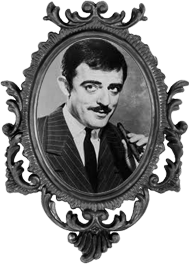
Gomez
Gomez became the master of the Addams household and the Addams patriarch, married to Morticia and the father of Wednesday and Pugsley. Originally he was Grandmama's son, but this was retconned in the 1991 film, and he became Grandmama's son-in-law instead. Also retconned in the films, he became the younger brother of Fester instead of his nephew-in-law. In the original cartoons in The New Yorker, he appeared tubby, snub-nosed and with a receding chin.
In the 1960s television series, Gomez was portrayed as a naive, handsome, and successful man, although with a childlike, eccentric enthusiasm for everything he did. For instance, his personal portrait depicted him as standing gleefully on his head. Though a peaceful man, he was known to be well-versed in many types of combat; he and Morticia fenced with foils sometimes.
Gomez professed endless love for his wife, Morticia. He had studied to be a lawyer, but rarely practiced, one of the running jokes being that he took great pride in losing his cases. He was also pleased with the fact that his law class had voted him the man "Least Likely to Pass the Bar".
See more
Morticia
Morticia Addams (née Frump) was the matriarch of the Addams Family, a slim woman with pale skin, clad in a skin-tight black hobble gown with octopuslike tendrils at the hem. Certain sources[weasel words] suggested she might be some kind of vampire. She adored her husband, Gomez, as deeply as he did her.
Morticia's original mother was Hester "Franny" Frump (played in two episodes of the television show by Margaret Hamilton), but her origins were later retconned in the films and she became Grandmama's daughter (and Grandmama became known as Esmeralda Frump). Morticia had an older sister named Ophelia. In the television show, her marriage brought her uncle Fester into the family.
See more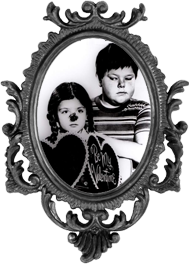
Pugsley and Wednesday
Gomez and Morticia had two children, a son called Pugsley and a daughter called Wednesday. Wednesday was said to have been named after the phrase, "Wednesday's child is full of woe," from the poem "Monday's Child". Her middle name, Friday, corresponds to the 1887 version of the poem. In the television show she was a sweet-natured, innocent, happy child, largely concerned with her fearsome pet spiders. A favorite toy was her Marie Antoinette doll, which Pugsley had guillotined. The movies gave Wednesday a much more serious and mature personality with a deadpan wit and a morbid fascination with trying to physically harm, or possibly murder, her brother (she was seen strapping him into an electric chair, for example, and preparing to pull the switch); she was apparently often successful, but Pugsley never died. Like most members of the family, he seemed to be inhumanly resilient.
In the animated series, Wednesday became a happy and somewhat optimistic child, while retaining her sophisticated manner from the movies, and Pugsley became a genius at chemistry—especially explosives—and machines, though his intelligence seemed undeveloped at times.
See more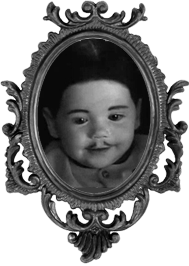
Pubert
In the 1993 film Addams Family Values, Gomez and Morticia have a third child, a son named Pubert (voiced by Cheryl Chase), a mustachioed baby who seemed to escape certain death through random chance a number of times. At some points in the movie, flaming arrows that originate off-screen fly by, with the implication that Pubert is the one who shot them. Originally conceived by Charles Addams for the character eventually named Pugsley in the 1960s television series, the name was rejected back then due to fears that 1960s network censors would not allow it because of its similarity to the words "pubic" and "puberty".
Pubert is referred to in the unrelated 1998 straight-to-video film Addams Family Reunion and the short-lived follow-up series that aired on Fox Family Channel, in which Wednesday stated that there used to be a third sibling, but that they ate it.
See more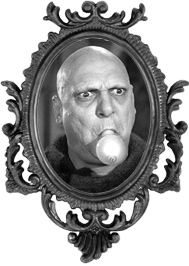
Uncle Fester
Fester is a bald, barrel-shaped man with dark, sunken eyes and a devilish grin. He seemed to carry an electrical charge, as he could illuminate a light bulb by sticking it in his mouth. In the original television series, Fester was Morticia's uncle. In all subsequent animated and film media, Fester was Gomez's older brother, save for The New Addams Family where Fester is portrayed as Gomez' younger brother. The character played a central role in both of the first two feature films. In The Addams Family, Fester was reunited with the other Addamses after 25 years apart, while The Addams Family Values focused on his relationship with Deborah "Debbie" Jellinsky.
See more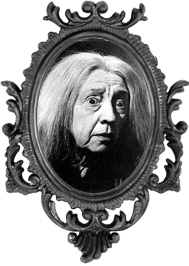
Grandmama
Grandmama is a witch who deals in potions, spells, hexes, and even fortune-telling. Her trademarks were her shawl and grey, frizzy hair. Charles Addams originally named the character Grandma/Granny Frump in his notes for the cartoon characters's adaptation to television in 1965,[1] thereby making her Morticia's mother. For the 1960s television series—as well as The New Addams Family, in which she is named Eudora Addams—her relationship to the family was retconned and she became Gomez's mother.
However, both feature films and the animated television series conformed to Charles Addams's original concept of Grandmama as Wednesday's and Pugsley's maternal grandmother. In the first film, Morticia and Gomez discussed how Mother and Father Addams were killed by an angry mob, removing any possibility that Grandmama could be Gomez's and Fester's mother. In the third film, in which she was named Esmeralda, she was again implied to come from Morticia's family. The character was simply referred to as Granny in the two animated series. In the second episode of the 1992 series, Grandmama introduced herself with the line, "the name's Granny Frump",[9] while the following episode referenced Gomez's parents, Mother and Father Addams.
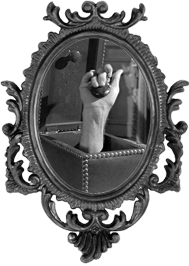
Thing
Another member of the family is "Thing" and, as created by Charles Addams, he was a shy creature mostly seen in the background of Addams's drawings; however, the television series suggested it was a disembodied hand named "Thing", and was Gomez's friend since childhood. He (it is implied in the original television series that the character is male) often performed common, everyday tasks such as retrieving the mail, writing a letter, or just giving a friendly pat on the shoulder, appearing out of ubiquitous boxes or other convenient containers throughout the house. He communicated with the Addamses with a Morse-like alphabet, sign language, writing, and knocking on wood. In the movies and The New Addams Family, Thing was a fully mobile hand, cleanly severed by movie magic just below the wrist (no muscle or bone being visible) and free to scamper about on his fingertips. In the original television series, which included recurring bouts of arm-wrestling with Gomez, Thing never appeared beyond the elbow. He lived in an upstairs closet made up as a house-within-a-house, though he was also shown to reside in a cigar box. In the original television series, Thing was generally played by Ted Cassidy, the actor who also played Lurch. He was usually a right hand, but Cassidy occasionally used his left, "just to see if anyone noticed".[11]
See more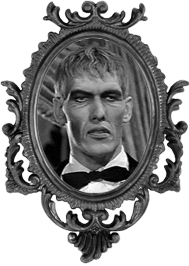
Lurch
In addition to Thing, the Addams family also had a tall, ghoulish manservant named Lurch. Lurch served as a shambling, gravelly-voiced butler, unscarred yet reminiscent of Frankenstein's Monster, and a funereal but obedient "jack of all trades".
He tried to help around the house, although occasionally he botched tasks due to his great size and strength, but is otherwise considered quite a catch by the Addamses for his skill at more personal tasks, such as waxing Uncle Fester's head and amusing the children (to whom he was deeply devoted). Surprisingly, he was often seen playing the harpsichord or organ with great skill and uncharacteristic passion. In Addams Family Reunion, Gomez stated that Lurch is not really an Addams, and Morticia replies that Lurch has parts of many families, and that he has the heart of an Addams. In one episode of the 1960s television series, Lurch's mother, played by actress Ellen Corby, came to visit; she was a short, overbearing little old lady. Lurch, too, had a level of invulnerability; in Addams Family Values, a 20-pound cannonball is dropped from the top of the Addams mansion, landing directly on his head, seemingly with no ill effect. In the original comics, Lurch did not speak.
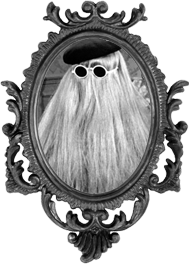
Cousin Itt
Cousin Itt, as so named by the television series producer, (spelled as "Cousin It" in the movies and the pinball game), who frequently visited the family, was short-statured and had long hair that covered his entire body from scalp to floor. Cousin Itt drove a 3-wheeled car: a .[12] Although in the series he was shown wearing opera gloves, it is unclear what, if anything, is beneath the hair.
In episode 34 of season 1 of the original television series, when Gomez asked Cousin Itt what is underneath all the hair, Cousin Itt replies, "Roots." He was known to speak in a high-pitched nonsensical gibberish, that only the family seemed to understand; in the "My Fair Cousin Itt" episode of the sitcom, Morticia and Gomez, although still failing to realize that Cousin Itt's speech is utterly incomprehensible to most people (Morticia went so far as to admit that Itt sometimes speaks "a bit too rapidly for the average listener," while Gomez had failed to notice even that much), taught Cousin Itt to speak in an understandable baritone voice for acting purposes to suit a theatrical director's tastes. In the second animated series, Itt was a super-spy for the U.S. government. In the movies he fell in love with a human woman, Margaret, and married her after her first husband, Tully the lawyer, is disposed of by the Addams children.
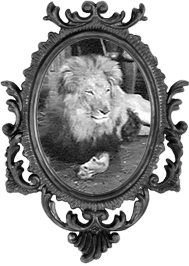
Pets
In the sitcom, references were made to an innumerable collection of bizarre and unconventional creatures such as hawks, bats, and alligators, although there were a handful with some consistency throughout the various media which the characters have subsequently appeared in.
Kitty Cat is the family lion, and can be seen in several 1960s television episodes roaming around the house. (Though not seen in the 1991 film, Gomez can be heard shouting 'Down, Kitty!' while going to the vault to pay Tully, while a lion's roar can be heard.) The entire family regarded Kitty Cat as they would an average housecat, and seemed flummoxed at the notion that Kitty Cat is in any way dangerous. Pugsley had an octopus called Aristotle, and Wednesday a large collection of spiders, with only one she mentions in particular by name, called Homer. The family also had a pair of piranha named Tristan and Isolde, who lived invisibly in a modest fish tank—but whenever Morticia fed them their enormous chunks of meat, the violently churning waters were sure to terrify a visitor. There was a vulture named Zelda (changed to Muerto for the first film). Cleopatra is an African Strangler, a man-eating plant (similar to Audrey 2 from Little Shop Of Horrors), belonging to Morticia. See more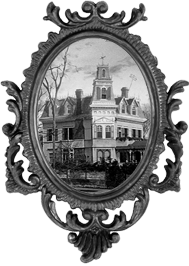
The Mansion
The Addams family's mansion had many different incarnations over the years. It made its first appearance (at least, the interior did) at the same time as Morticia and Lurch, in one of Charles Addams's cartoons. The house was depicted as being a dilapidated mansion that had been condemned (and was seemingly haunted, due to the strange creatures at the top of the staircase). Since then, it had become almost a character itself, and served as the main setting for the rest of the cartoons featuring the Addams family. Stories surrounding the mansion (in video games, primarily) are common, and the house's origins and specific nature were explored more deeply in The New Addams Family than any other incarnation.
In the 1960s television series, the house was given an address: 0001 Cemetery Lane. Instead of being a dilapidated house, it was now practically a museum, filled with odd statues, trophies, and other interesting knick-knacks. The house also sported a playroom with medieval racks, nailbeds, iron maidens, pillories and stocks, used by the family to relax.
See more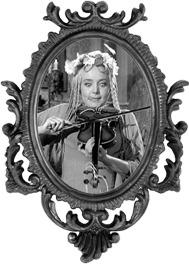
Houseguests
Guests included Morticia's older sister Ophelia (also played by Carolyn Jones in the original television series), Morticia's cousin Melancholia, and Morticia's mother Hester "Franny" Frump (played in the 1960s series by Margaret Hamilton, wearing her Miss Almira Gulch dress from the 1939 movie The Wizard of Oz)[citation needed]. The Addamses had many other eccentric relatives in the 1960s television series, who are described but never shown—unless they were intended to be represented by any of the bizarre family portraits seen hanging on the walls.
See moreNeighbors
Most of the Addamses' neighbors were less than understanding of the family's eccentricities. Within the larger community, the Addamses were viewed as eccentric, dangerous, or worse. Both the television show and the movies dealt with outsiders attempting to understand and "correct" the behavior of the family, and remaining frustrated and horrified by the things that the Addamses find amusing. The Addamses, for their part, were just the opposite, and were often shocked and horrified at the actions of conventional society.
The second animated series introduced three new regular characters: the Normanmeyers (Norman, Normina, and N.J.), a family of "normal" people living across the street from the Addamses. While Norman and Normina were constantly appalled and shocked at the Addamses' macabre behavior, their son N.J. counted Wednesday and Pugsley as his best friends. Norman owned and worked at an underwear factory and was utterly obsessed with underwear, decorating the entire Normanmeyer house with an underwear motif, which arguably made him less "normal" than the Addams Family themselves. Norman was played by Rob Paulsen, Normina was voiced by Edie McClurg, and N.J. was performed by Dick Beals.
See moreCousin Cackle
Another cousin, named "Cousin Cackle", was depicted as residing in the caves beneath the Addams mansion, often heard laughing in a cackling manner, and appeared in one Halloween episode of the television series to participate in a seance.
See moreThe Beineke Family
Not originally created by Charles Addams, the Beineke family was introduced in the 2010 musical, as Wednesday and Lucas plan a dinner for their two families to meet. Coming from Ohio, they were described as "straight arrow Midwesterners."[13]
- Lucas Beineke, Wednesday's boyfriend. He and Wednesday planned to get married.
- Mal Beineke, Lucas's father. He worked for an unnamed demolitionreal estate company.
- Alice Beineke, Lucas's mother. She loved to rhyme, and to spout happy poems at random.